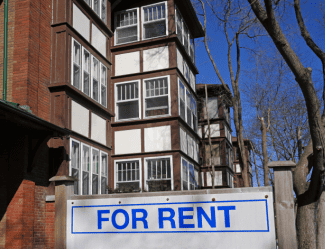Rents Are Falling But Falling Slower In The Suburbs

Rents are falling and down year-over-year in most parts of the country but many suburban communities, which experienced dramatic rent inflation in 2021 and 2022, are seeing slower rent drops than urban areas, according to a new report from Apartment List.
“The rental market is taking a deep breath in 2023. Double-digit annual rent growth persisted in 2021 and 2022, but has swiftly fallen to -0.7% as of our most recent estimates for July, meaning apartments are renting for less today than they did one year ago.
This is the first year-over-year price drop the rental market has experienced since the early days of the COVID-19 pandemic,” writes Apartment List senior research associate Rob Warnock.

Urban-suburban rent gap
The urban-suburban gap has widened steadily for the past eight months because rent drops have been slower in the suburbs than in core cities, the report says.
In some metro areas, the urban-suburban gap is more than twice the national average. This includes a handful of dense, coastal metros like Seattle, Portland, Los Angeles and Washington, DC; where core cities experienced deep rent cuts early in the pandemic are just now returning to pre-pandemic prices.

What’s Next for Suburban Rental Markets?
Rent growth should continue to cool in the coming months, as fewer moves take place during the winter and a strong construction pipeline creates new apartment vacancies.
But it remains to be seen if forthcoming rent drops will remain concentrated in urban centers or if they will proliferate outwards to the suburbs.
As more workers return to downtown offices, some apartment demand should shift inward towards core cities. And a recent study found that the majority of last year’s new building permits were issued in suburban areas. These trends suggest that we are moving in the direction of better supply-demand balance in the suburbs. Nevertheless, rents in many suburbs are over 20 percent higher today than they were in 2020, so strong supply growth must be maintained for years to reclaim some of the affordability that was lost during the pandemic.
Source: Rental Housing Journal
Need a Lease Agreement?
Access 150+ state-specific legal landlord forms, including a lease.















 Accessibility
Accessibility